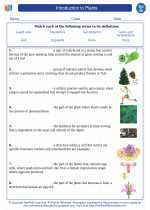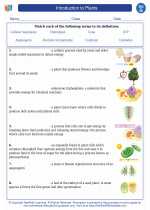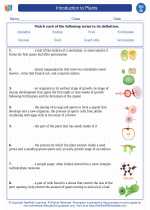Terrestrial Ecosystems
A terrestrial ecosystem is a type of ecosystem found on land. It is characterized by the presence of various plant and animal species interacting within a specific environment. Terrestrial ecosystems can include forests, grasslands, deserts, and tundra, among others.
Components of Terrestrial Ecosystems
1. Producers: Plants and other photosynthetic organisms that produce their own food through photosynthesis.
2. Consumers: Animals that obtain their energy by consuming other organisms.
3. Decomposers: Organisms such as bacteria and fungi that break down dead organic matter, returning nutrients to the soil.
4. Abiotic Factors: Non-living components such as sunlight, temperature, water, and soil that influence the ecosystem.
Key Concepts
1. Energy Flow: The transfer of energy through the ecosystem, typically starting with the sun and moving through the food chain.
2. Biogeochemical Cycles: The cycling of nutrients and elements such as carbon, nitrogen, and water between living organisms and the environment.
3. Biodiversity: The variety of plant and animal species within an ecosystem, which contributes to its stability and resilience.
4. Adaptations: The specialized features and behaviors that enable organisms to survive and thrive in their specific terrestrial habitats.
Human Impact
Human activities such as deforestation, urbanization, and pollution have significant impacts on terrestrial ecosystems, leading to habitat destruction, loss of biodiversity, and climate change.
Study Guide
When studying terrestrial ecosystems, it is important to focus on the following key points:
- Describe the characteristics and components of different types of terrestrial ecosystems.
- Explain the flow of energy through a terrestrial food chain or food web.
- Discuss the role of abiotic factors in shaping terrestrial ecosystems.
- Explore the adaptations of specific plants and animals to their terrestrial habitats.
- Analyze the human impacts on terrestrial ecosystems and potential conservation strategies.
Understanding terrestrial ecosystems is vital for comprehending the interconnectedness of life on land and the ways in which human activities can impact these diverse environments.
.◂Biology Worksheets and Study Guides High School. Introduction to plants

 Worksheet/Answer key
Worksheet/Answer key
 Worksheet/Answer key
Worksheet/Answer key
 Vocabulary/Answer key
Vocabulary/Answer key
 Vocabulary/Answer key
Vocabulary/Answer key
 Vocabulary/Answer key
Vocabulary/Answer key
 Vocabulary/Answer key
Vocabulary/Answer key
 Vocabulary/Answer key
Vocabulary/Answer key
